|
|
ADDRESS AT THE 26th CONVOCATION OF TAMIL NADU AGRICULTURAL UNIVERSITY, COIMBATORE
06-07-2005 : Coimbatore
Emerging Agricultural missions
I am indeed delighted to participate in the twenty-sixth Convocation of the Tamil Nadu Agricultural University. It is remarkable that this University has generated more than 18,500 agriculture professionals who are enriching the agricultural resources of the nation. The university is well known for agricultural research in Rice varieties and hybrids, Papaya and other horticultural crops, Integrated Pest Management and Jatropha Curcas for Bio-fuel. You have also established close interaction between the farmers, students, entrepreneurs and researchers from multiple organisations. My congratulations to all the students who are graduating today and entering into the annals of their professional world. My greetings to the Vice Chancellor, Professors, and staff members of the University for shaping the students as scientists, technologists and researchers, and above all as enlightened citizens of the nation.
Nurturing the talent
I would like to narrate an incident during a function conferring Prof. Norman E Borlaug with Dr. M S Swaminathan award, at Vigyan Bhavan, New Delhi on the 15th of March 2005. Prof. Borlaug, a Nobel Laureate and a well known agricultural scientist, at the age of 91 was in the midst of all the praise showered on him from everybody gathered there. When his turn came, he got up and highlighted India?s advancement in the agricultural science and production and said that the political visionary Shri C. Subramaniam and Dr. M S Swaminathan were the prime architects of First Green Revolution in India. He also recalled with pride, Dr. Verghese Kurien who ushered White Revolution in India. Then the surprise came. He turned to scientists sitting in the third row, fifth row and eighth row of the audience. He identified Dr. Raja Ram, a wheat specialist, Dr S K Vasal, a maize specialist, Dr. B. R. Barwale, a seed specialist. He said, all these scientists had contributed for your green revolution. Dr. Borlaug introduced them to the audience by asking them to stand and ensured that the audience cheered and greeted the scientists with great enthusiasm. This scene I have not witnessed in our country, so far. This action of Dr. Norman Borlaug, I call it as a Scientific Magnanimity. Young friends, if you aspire to achieve great things in life, you need Scientific Magnanimity. Think about it and correspond with me. It is my experience that great mind and great heart go together. This will motivate the scientific community and nurture team spirit. Here I am reminded of Thiruvalluvar's famous Thirukkural:

It means the right thoughts become the seeds for the great achievements.
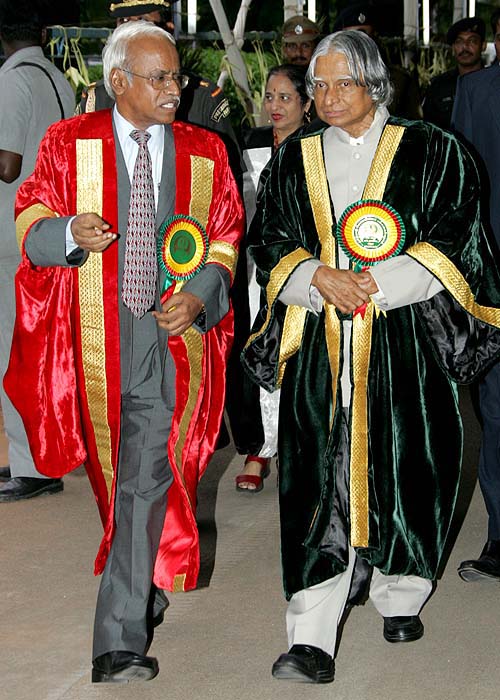

Bio diversity theme gardens
Let me share with you an experience. In Rashtrapati Bhavan, there was certain unutilized land. I was debating with experts during the morning walk how to utilize the land fully. India needs value addition to special herbs and medicinal plants. Hence, the necessity of the herbal garden was felt and it was established to demonstrate the importance of value addition to the farmers.
At a second location, we went for Jatropha Curcas bio-fuel farm, as the Government has decided that up to 10% bio-fuel can be mixed with diesel. This indeed is a very big economic proposition and employment generator.
Friends, you know somehow our societies can generate many divisions and quarrel over one note or the other. However, I observed that there are some plants that co-exist. They are common to many religions and are respected. Keeping this in mind, we started a spiritual garden at a third location.
The herbal garden illustrates to the farmers, how to raise herbs and aromatic plants and add value to their products, by extracting, storing and marketing the products. This is being done in partnership with National R&D Laboratories at Rashtrapati Bhavan. Important medicinal plants, shrubs and herbs are grouped according to their curative properties of diseases of a particular system of the human body. There is also provision for visually challenged people, to feel the plant, smell the leaves and learn about their various attributes of the plants, through the Braille boards.
The spiritual garden has certain plants, which are valued by people of various religions. We grouped these plants in such a way, so that thousands of people when they see it, they may learn from these plants on how to co-exist. The spiritual garden seeks blossoming of harmony in the hearts leading to unity of minds.
The Jatropha curcas gives a very important message of cultivation of bio-fuel plants with minimal water. The farmers learn about the Jatropha cultivation and the conversion of Jatropha into bio-fuel that can substantially increase the earning capacity of the farmers. Incidentally, Jatropha Curcas plants from your University are also nurtured in our garden.
In this way, Rashtrapati Bhavan was able to offer something of value to the farmers, enriching experience to the visually challenged people, inquisitive learning experience to the students, inspirational experience to the people of different religious faith and spiritual personalities and above all bliss to the lovers of beautiful flowers, during this year. Normally, Rashtrapati Bhavan receives about 200,000 visitors to the Garden, every season. However, this year, Rashtrapati Bhavan attracted over a million people including farmers, horticulturists, students and small scale industrialists. I am sure with its agricultural farms and knowledge base, TNAU will be attracting many million seekers of knowledge.
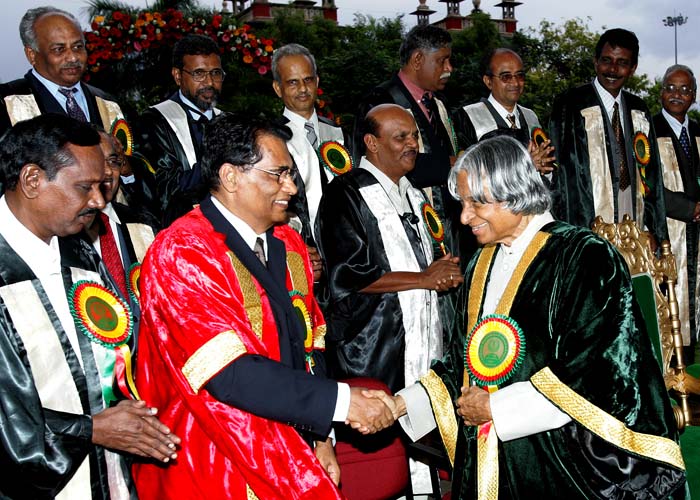

Changing pattern of society
When the world was moving from the industrial to information and knowledge era, we witnessed a changing pattern in the sectoral share of GDP and the number of people employed in each sector. The share of Gross Domestic Product (GDP) percentage has undergone a considerable change. Contribution of agriculture to India?s GDP has reduced from 39% to 22% during the period 1979 to 2004. During the same period contribution of manufacturing sector has moved from 24% to 27% and whereas the contribution from the services sector has increased from 37% to 51%. There has been considerable change in the employment pattern also. The percentage of people employed in agriculture has come down from 64% to 54%. Simultaneously, the percentage of people employed in manufacturing has gone up from 15% to 19% and in the service sector from 20% to 27%. This trend will continue and by 2020 our employment pattern expected is 44% in agriculture, 21% in manufacturing and 35% in service sectors. The displacement of 10% people from agriculture sector has to be compensated through skill enabling for undertaking value added tasks in the rural enterprises so that migration to urban area is reduced. As you know, the GDP growth of India is largely dependent on agriculture and in turn good monsoon. Our aim should be to become minimum dependent on monsoon with arid land cultivation techniques. The 2020 vision specially focuses on agriculture and food processing as a very important area for assured growth in GDP. The specific areas in which the university has to lay emphasis for agricultural productivity are soil upgradation, quality of seeds, water management, agro processing and waste management.
Now I would like to discuss the role of Information Technology in Agriculture.
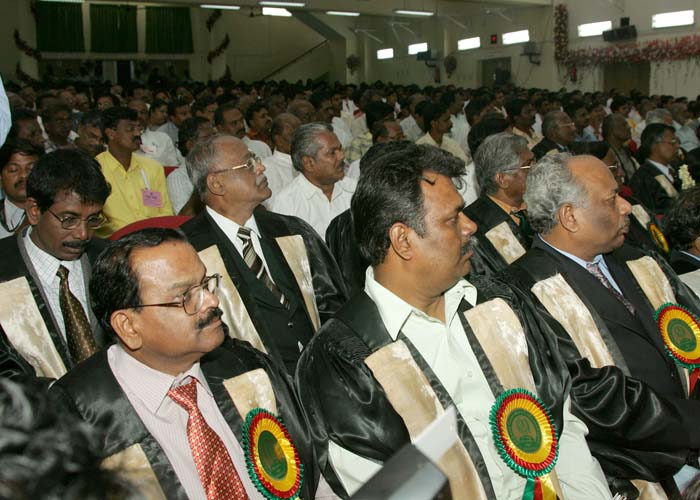

Role of Information Technology
Information Technology should be used for maintaining an updated and enriched database of region specific agricultural information and timely dissemination of the information pertaining to soil enrichment, seed selection, actions relating to arrival of monsoon, etc., to the farmers. In addition, information regarding agricultural product preferences - both national and international, demand-supply status in respect of different products and the current price should be made available on-line to the farmers for taking timely decisions on crop product diversification strategies and positioning of the same in right market to get optimum revenue. The University can extend their support to the district and panchayat level institutions to take a lead in central acquisition of the latest information using IT as a tool and making it available to the farmers in their native language. It should be used by networked agricultural universities to generate data bank for at least 20-years. The database should provide information on seed management, water management, treatment for typical diseases, and above all annual output, distribution and market dynamics.
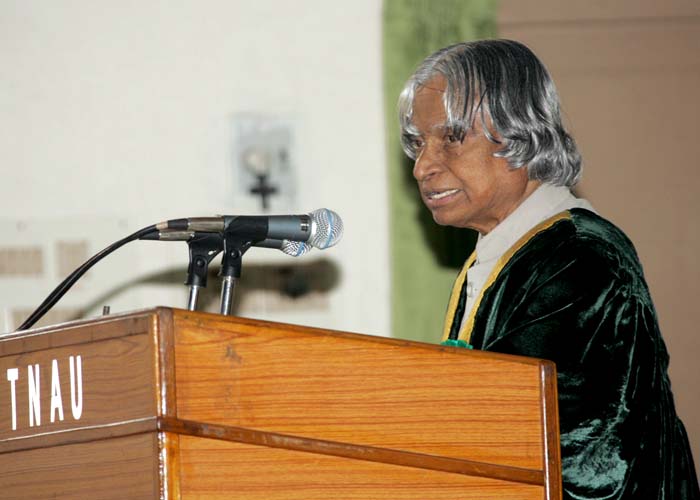

Tele-consultancy
This University should be connected to other universities of excellence in the country and also farming centres through tele-education. The students of these universities should have a collaborative tele-education network for interacting with renowned scholars in various specializations. Tele-education will provide knowledge connectivity and will facilitate the creation of a knowledge society, leading to enhanced wealth generation for national development. In order to bring about a vibrant educational and research atmosphere, we need to initiate research programmes in collaboration with various scientific and research institutions in the country in the core competence area of the university. This networking will provide larger exposure to the students and the faculty of the university and enable enhanced employment and research opportunities. Now that we have the pictures from large number of remote sensing satellites, agricultural scientists should concentrate on the collection and dissemination of remotely sensed data and advice the farmers for enhancing agricultural productivity in the whole region.
The University in coordination with local institutions can consider extending tele-consultancy services in agriculture and related fields, to the farmers, thereby ensuring timely dissemination of appropriate information. I understand that you are engaged in the research work of Medicinal and Aromatic Plants. The people of the region can get benefit of the successful results of such projects through tele-consultancy facility in the area of herbal plants. The university can suggest to the farmers to go for suitable plantation in between the main crops. This will enrich the soil and also farmers will get incremental income. Now I would like to discuss with you a rural development concept.
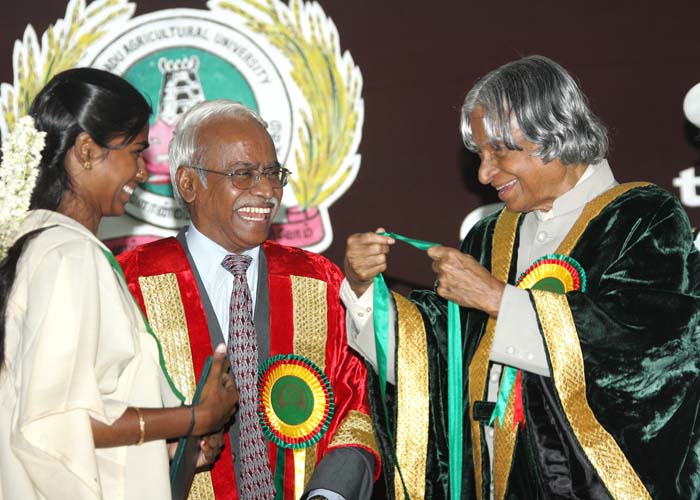

Economic Connectivity for PURA
Providing Urban facilities in Rural Areas (PURA) consisting of four connectivities: physical, electronic, knowledge and thereby leading to economic connectivity to enhance the prosperity of clusters of villages in the rural areas. The economic connectivity will generate a market and the production establishments for servicing the market. The PURA has all the dimensions to become a business enterprise, which has global dimensions but operating in every nook and corner of our country. The PURA entrepreneur has to have the skill for evolving a business plan with banks and also create infrastructural support such as educational institutions, health centres and small scale industries, transportation services, tele-education, tele-medicine, e-governance services in the region integrating with the governmental rural development schemes such as road, communication and transport and also with national and global markets to sell the products and services. The agricultural scientists graduating from this university should be equipped to become a PURA entrepreneur and this university should provide knowledge connectivity and skill enable the farmers to improve the lifestyle and prosperity of the rural population.
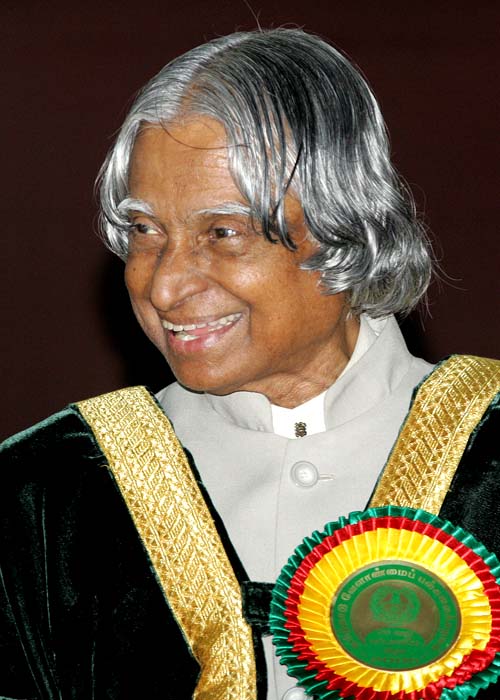

Emerging Vision for Agricultural University
I can see the number of departments, faculties in different areas such as agronomy, agricultural economics, bio chemical technology, bio-technology, bio-informatics etc. The time has now come, when an agricultural student graduates from this university, he or she should be equipped with the knowledge of agricultural system technologies.
Here, I would like to narrate an incident while I was having a meeting with Shri C. Subramaniam. He was the main architect of the first green revolution. During the meeting, I remember, at the age of 90, he was unfurling his vision for the second green revolution. He said, India's first green revolution was a result of the partnership of farmers, agricultural scientists and the political visionaries. The first green revolution was the process of seed to grain. The second green revolution that he envisaged is soil to seed; seed to grain; grain to food and food to marketing. He visualized a change of chain, starting from soil to food processing and marketing, but not grain alone. Since our food production has to double by the year 2020, the agricultural scientists have a great responsibility to generate 400 million tonnes of food production, with minimum cultivable area available (170 million acres will reduce to 100 million acres), reduced availability of water and lesser number of agriculturists. It is indeed a great challenge. It implies that future agriculture graduates should have knowledge of soil characterization, water management, fertilizer management, pesticide management, pre and post harvest management, agricultural waste management, agro processing and marketing and be able contribute in the total value chain. All this has to be part of the curriculum in an integrated way. Professors and teachers need to do research and teach agriculture as a holistic mission.
There are emerging technologies which are going to influence agriculture that is the convergence of biotechnology, IT and nano technology. In the same way, Agriculture University has to be convergence of multi-disciplinary fields. I would suggest this University to pay particular emphasis for developing agricultural entrepreneurs who can run agriculture as a value added industry, wherever they live, particularly in the rural areas for bringing rural prosperity through networking and connectivity.

Conclusion
India has already launched the second green revolution. The Government has announced a rural development programme �Bharat Nirman�. Agricultural Universities and the young graduating scientists have a key role to play in contributing towards the successful implementation of this programme to bring about the needed societal transformation and prosperity to our rural population. This is the time for TNAU to adopt fifty villages in this region and establish a model PURA having all the Connectivities, particularly, the knowledge connectivity with a sustainable economic growth plan for individual families. Here the focus has to be, integrated development in the field of agriculture from grain to food processing and marketing. This in future years can become the final year project for all the students of the University. My best wishes to the graduating students and all the members of the University for success in their mission of creating agricultural enterprises in the region.
May God bless you all.
<<Back
|
|